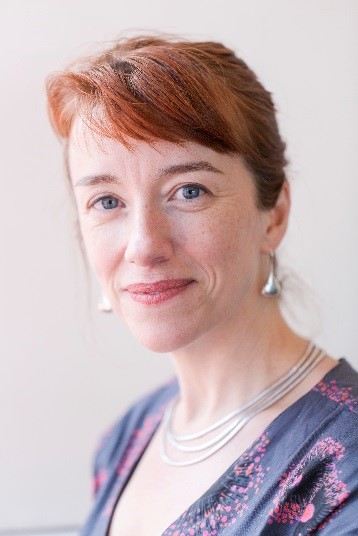
Public health research received some well-deserved recognition in this year’s Australia Day honours list with the appointment of epidemiologist Professor Emily Banks as a Member of the Order of Australia. Professor Banks, a Senior Adviser at the Sax Institute and head of the National Centre for Epidemiology and Population Health at ANU, has had a long and illustrious career in public health, both in Australia and internationally. On the occasion of her award, Evidence Matters sat down with Emily Banks to discuss the importance of epidemiology and the future of public health.

Q. What does your honour mean for you and for the recognition of public health in Australia?
A: Public health people are used to being behind the scenes. Our duty of care is to the whole population, so we don’t have that experience in clinical medicine where an individual patient will say thank you. So to be actually recognised for what you do is a fabulous feeling! I’m so grateful and honoured to be receiving this award.
It’s also great to see public health getting recognised. The work of public health is generally incremental and in the background in a way that people aren’t conscious of. But the results are real. For example, we have 150,000 fewer premature deaths from cardiovascular disease every single year than we would have had at 1968 rates. There are people now alive who would have been dead without public health, but they don’t realise it.
Q. Which of your recent research projects are you most proud of and have had the most impact?
I’m certainly very proud of the work my team and I have done on smoking. Our research is about adding to the evidence about the harms of smoking and providing evidence with direct, contemporary relevance to Australia. Our work using data from the 45 and Up study showed that up to two-thirds of all current smokers will die from their habit if they don’t quit. That is quite a big increase on the previous estimates that around half of all smokers would die.
We’ve just published a paper that looks at smoking mortality in Aboriginal and Torres Strait Islander people which showed once again that we’ve underestimated smoking impact. Over a third of all deaths of Aboriginal people are attributable to smoking and around a half of all deaths of people aged 45 and over are attributable to smoking.
Our smoking data is used widely – by the Cancer Council, Heart Foundation, in government documents and to support legislation. It’s also used on the frontline – when people call the quitline, they will get information about the harms of smoking, and that will be based on our research.
I’m also very proud of the work I did with the World Health Organization on female genital mutilation (FGM). This research was done in six different African countries, led by African researchers, and I was involved in designing the study and supervising analysis and writing the paper. We followed 28,000 women through their labour and looked at their outcomes and those of their baby. Up until that point, we had no high-quality evidence on the impact of FGM on obstetric outcomes, and our work remains the only good evidence we have about it. It showed that women who had had FGM were more likely to have complications during delivery, that the baby was more likely to die in the perinatal period, and that the harm increased with the degree of FGM. The research evidence contributed to the UN resolution on the elimination of FGM and is widely used in advocacy and public health messaging.
Q. What initially drew you to the field of epidemiology?
I trained in clinical medicine. But I found it difficult to understand how the evidence had been gathered for medicine and felt frustrated. Then I attended an epidemiology lecture and it was a real light bulb moment. I took a year off and did epidemiology and biostatistics and when I went back into medical training I felt much better.
The other important thing was being confronted with very sick people in the hospitals I was working in. These were people who never wanted to end up in hospital in the first place and I started to see how important prevention was. So it was a combination of being driven by curiosity and wanting to contribute to evidence-based medicine, but also wanting to work on prevention and make a difference at scale.
Q. How has the field changed during your career?
I’ve spent 30 years working in epidemiology and over that time I’ve seen a lot of changes. One is how the field is regarded. When I was at medical school, people thought I was crazy when I said I wanted to be an epidemiologist. I had mentors trying to talk me out of it! But that attitude is a lot less common these days – an understanding of epidemiology is now seen as part of a well-rounded education in health. The COVID crisis has also made a huge difference to the recognition of our work. People are much less likely to confuse me with a dermatologist than they used to be!
One of the great frustrations with public health is that because the messages need to be presented to the public in plain, easily understood language, people tend to think it’s self-evident and easy to do. If a surgeon starts talking in medical jargon about heart surgery, you wouldn’t think: ‘Yes, I could do that’. But there are fewer people experienced at controlling multiple pandemics on the ground than can do a heart transplant. With COVID, we’ve seen in many countries that it’s not straightforward to control diseases at scale. It takes a huge amount of expertise and training, as well as political will, to get things right, and it is easy to get things wrong.
Q. You’ve been involved with the Sax Institute for a long time, a lot of it as Scientific Director of the 45 and Up Study. How important do you think major longitudinal studies of this kind are in general, and the 45 and Up Study in particular?
When it comes to evidence, I always talk about horses for courses. Evidence comes in different forms: if it’s a question of whether or not a particular intervention or medication works, there’s no substitute for a randomised trial. On the other hand, there are many areas where a randomised trial is not possible. You can’t do a randomised trial on the relationship between smoking and heart disease, because it would be unethical to randomise people to smoke or not. So we need high-quality longitudinal studies to look at risk factors. We need to get away from the idea that there is a hierarchy in the types of evidence; we have to understand that it needs to fit the purpose.
For evidence to fit the purpose, it often needs to be local. One of the most important things the 45 and Up Study provides is a resource for looking at Australian health outcomes. Before 45 and Up, we had smaller cohort studies in Australia, generally not of the scale where you’d be able to look at a range of effects on health. The 45 and Up Study allows much greater statistical precision because we have much greater numbers and it is more inclusive, encompassing a significant proportion of the population. It’s also a collaborative resource, designed from the very beginning to be accessible to researchers, not owned by a specific research group. And it has widespread data linkage, which means you can find out about exposures and outcomes that are of broad relevance to a lot of different policy and practice questions.
For me, if the 45 and Up Study hadn’t existed, I don’t actually know what kind of research I would have done. It would have been quite difficult for me to stay in Australia without a resource of that nature. I certainly wouldn’t have been able to do such high-impact research on smoking and mortality in Australia without the 45 and Up Study.
Q. What are the key long-term public health challenges we face in Australia? What should we be doing about them?
Broadly speaking, our main current and future public health challenges relate to chronic, noncommunicable diseases – cancer, cardiovascular disease, chronic lung disease, dementia, arthritis, diabetes and mental health issues. We need to incrementally improve what we’re doing and we are not on track to do this, particularly in our control of cardiovascular disease. One factor is the burgeoning problem of obesity and another is massive shortfalls in implementation. We know from our own work that of all Australians at high risk of a stroke or heart attack in the next five years, only 25% are on blood pressure and lipid lowering medicines. Three-quarters of this population are not getting the most basic preventive medications.
Another problem is inequality. Health is not equally distributed in Australia. Disadvantaged people are much more likely to have heart disease, for example, and we’re finding health gaps that are really quite large. If we want on focus on the future, we have to address these inequalities and think about how we can pragmatically address them.
